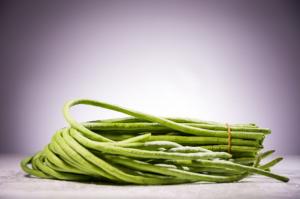Is Dracena a Good Indoor Plant?
Dracena is a popular houseplant that has a reputation for being easy to care for and adaptable to a variety of environments. However, many people wonder if it is a good choice for an indoor plant. In this article, we will explore the benefits and drawbacks of owning a dracena as an indoor plant.
Benefits of Dracena as an Indoor Plant
One of the main benefits of dracena as an indoor plant is its ability to purify the air. It is especially effective at removing pollutants such as benzene, formaldehyde, and trichloroethylene. This makes it an excellent choice for people who suffer from allergies or respiratory problems.
Another benefit of dracena is its low maintenance. It doesn't require a lot of attention to thrive, and it can tolerate a range of lighting conditions, from low to bright indirect light. Dracena also doesn't require frequent watering, so it is ideal for people who are busy or forgetful.
Drawbacks of Dracena as an Indoor Plant
While dracena has several benefits, it also has some drawbacks as an indoor plant. One of the main issues is its toxicity to pets. If ingested, dracena can cause vomiting, diarrhea, and other health problems in cats and dogs. If you have pets in your home, it's best to choose a non-toxic plant instead.
Another potential drawback of dracena is its size. Some species of dracena can grow quite large, up to six feet tall. This can be a problem if you have limited space in your home or if you're looking for a plant to fit on a small tabletop or shelf.
How to Care for Dracena as an Indoor Plant
If you decide to get a dracena as an indoor plant, here are some tips for caring for it:
Watering: Dracena doesn't require frequent watering, but you should make sure the soil is moist. Water the plant when the top inch of soil feels dry.
Lighting: Dracena prefers bright indirect light, but it can tolerate lower light conditions. Avoid direct sunlight, as this can scorch the leaves.
Temperature: Dracena prefers temperatures between 60 and 85 degrees Fahrenheit.
Fertilizer: Dracena doesn't require frequent fertilization, but you can feed it once a month during the growing season with a balanced fertilizer.
Conclusion
Overall, dracena is a good indoor plant for people who want a low-maintenance plant that can purify the air. However, it is important to consider the potential drawbacks, such as its toxicity to pets and its size. If you decide to get a dracena as an indoor plant, make sure to provide it with proper care to ensure it thrives.

 how many times do yo...
how many times do yo... how many planted tre...
how many planted tre... how many pine trees ...
how many pine trees ... how many pecan trees...
how many pecan trees... how many plants comp...
how many plants comp... how many plants can ...
how many plants can ... how many plants and ...
how many plants and ... how many pepper plan...
how many pepper plan...
































